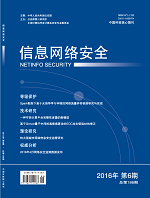The rapid development of Internet Technology has changed people’s lifestyle. And the e-commerce becomes one of the most popular web applications. Nowadays, malicious attacks towards web server of most e-commerce websites appear to be more and more common. However, related attack records can be found through analyzing access logs on web server of those e-commerce websites. The OWASP (Open Web Application Security Project) publishes ten attack technology the web server experienced every year, such as SQL injection, XSS attack and DDoS attack, etc. These attacks have caused great harm to the web server, on the one hand, the e-commerce websites can’t provide normal service for users, on the other hand, most data or privacy of users is leaked. This paper puts forward a solution to analyzing access logs on web server by the classification of web access logs and the matching of attack pattern and characteristics. The system can find out attack sources and types, and then displays the results in a graphical from in a web page, which helps security administrators of e-commerce websites to detect the attacks and improve the ability of resisting various attacks on web server.

